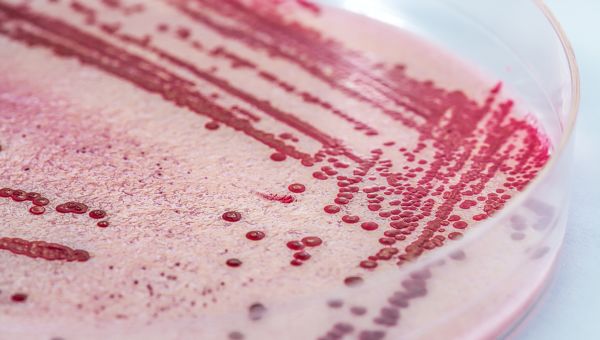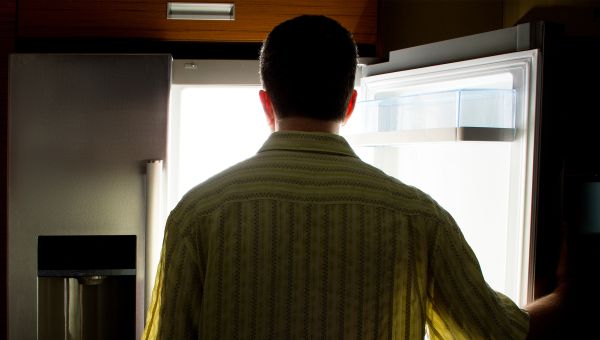Listeria: The Dangerous Bacteria That Could Be Hiding in Your Fridge
It's one of the leading causes of death from food illness. Here's how to avoid getting sick.
Updated on November 28, 2022

Food manufacturers and suppliers work hard to bring you safe products, but despite their best efforts that doesn’t always happen. Between 2017 and 2021, the Centers for Disease Control and Prevention (CDC) investigated a dozen multi-state outbreaks of Listeria, affecting foods including cheese, ice cream, and packaged salads. What's more, there have been several product recalls for fear of Listeria contamination. Most cases of Listeria, meanwhile, are not part of publicized outbreaks.
But what is this food bug, how does it get into our food, and how can we prevent it? Here’s what you need to know about listeria.

What’s in a name?
First, let’s be clear on what we’re talking about. Listeria is a bacterium (full name: Listeria monocytogenes), and listeriosis is an infection caused by eating food contaminated with the bacteria. The bacteria enters the body when someone eats tainted food, where it attacks the intestinal lining, causing diarrhea and other gastrointestinal trouble.
In certain high-risk groups, Listeria can also spread beyond the gut and cause infections of the bloodstream, nervous system, heart, lungs, or joints. It may lead to complications like septicemia, meningitis, pneumonia, and endocarditis (inflammation of the heart).

Uncommon but serious
Though it’s the third leading cause of death from food illnesses, listeriosis isn’t actually all that common. Yes, it’s one of the top reasons for food recalls and has been linked to a number of outbreaks in recent years. However, only about 1,600 Americans get sick each year from Listeria and about 260 die from it. Most people diagnosed with listeriosis end up in the hospital.

Refrigerator perils
Listeria is an unusual bug because it can grow in cold temperatures, including in the refrigerator. Keep your fridge at 40 degrees Fahrenheit (F) and your freezer at 0 degrees F or lower; Listeria can grow at those temperatures, but it will be slower. Make sure to clean up spills in your fridge as soon as you can, too, so the bacteria can’t keep growing and contaminate more food.
Listeria is killed by the dairy pasteurization process and by cooking food sufficiently. While Listeria is a hardy bacterium, able to grow with or without oxygen, cooking foods to at least 160 degrees F should get rid of it.

Listeria-prone foods
Listeria can be found growing on a number of meats, produce, and dairy products, but the usual suspects are:
- Deli meats and hot dogs
- Meat spreads
- Unpasteurized milk and dairy
- Soft cheeses like queso fresco, feta, brie, and Camembert, particularly those made with unpasteurized milk
- Smoked seafood
- Raw sprouts
- Melons

Who’s most at risk?
Anyone can get an upset stomach from Listeria, but pregnant people, older people, and people with compromised immune systems are at greater risk for the bacteria to spread beyond the stomach and cause serious complications. More than half of all Listeria infections happen to people 65 and older, and pregnant people are 10 times more likely than others to become ill with listeriosis. They can also pass the infection to their fetuses, which can cause miscarriages, preterm labor, stillbirths, brain damage, or a fatal infection after birth.
Pregnant Hispanic people are at an even greater risk—24 times more likely, possibly due to regular consumption of unpasteurized soft cheeses.

Symptoms
Symptoms of a Listeria infection include:
- Vomiting
- Diarrhea
- Fever
- Stiff neck
- Confusion
- Weakness
- Muscle aches
If you have a high fever or stiff neck, call your healthcare provider right away. Symptoms usually start one to four weeks after being exposed to the bacteria but can start as early as the day of exposure or as late as 70 days afterward. Pregnant people may only feel flu-like symptoms.

Diagnosing and treating listeriosis
How do you know if it’s listeria causing your diarrhea? The best way for healthcare providers to tell is by taking a blood sample.
As for treatment, here’s the good news: if you suspect you’ve eaten something contaminated with Listeria, but symptoms don’t show up or they’re mild, you’re likely the clear and treatment may not be necessary. But if you do have more severe symptoms, you’ll need antibiotics. And if you’re pregnant, get those antibiotics as fast as you can; they’ll help keep the fetus from contracting the infection.

Preventing listeria infections
Aside from keeping your fridge cold, here are some more tips for preventing listeriosis.
- Stay away from raw unpasteurized milk and anything made with it.
- Wash your hands, knives, counters, and cutting boards after preparing food.
- Rinse fruits and veggies thoroughly before eating them.
- Keep uncooked animal products and plant foods separate.
- Cook meat, poultry, and seafood to a safe internal temperature; that’s 165 degrees F for poultry, 160 degrees F for ground meat, and 145 degrees F for beef, pork, and fish.
- Heat leftovers to 165 degrees F and keep them for no more than three days.

How to find out more
Watch for symptoms and call your healthcare provider—especially if you’re pregnant or older—if you’re worried that you’ve eaten something that may have been contaminated by Listeria. You can track recalls on the FDA's website and outbreaks with the CDC.

Centers for Disease Control and Prevention. Listeria (Listeriosis): Listeria Outbreaks. Last reviewed November 17, 2022.
USDA Food Safety & Inspection Service. Recalls & Public Health Alerts. Accessed November 28, 2022.
Centers for Disease Control and Prevention. Listeria (Listeriosis). Last reviewed November 17, 2022.
Centers for Disease Control and Prevention. Listeria (Listeriosis): Questions and Answers. Last reviewed October 25, 2022.
U.S. Food & Drug Administration. Listeria (Listeriosis). Current as of July 20, 2022.
Centers for Disease Control and Prevention. Listeria (Listeriosis): People at Risk. Last reviewed November 8, 2022.
U.S. Food & Drug Administration. Get the Facts About Listeria. Current as of August 3, 2020.
U.S. Food & Drug Administration. What You Need to Know About Preventing Listeria Infections. Current as of March 22, 2018.
Centers for Disease Control and Prevention. Listeria (Listeriosis): Prevention. Page last reviewed July 18, 2022.
Mayo Clinic. Listeria infection. February 11, 2022.
Better Health Channel (AU). Food poisoning – listeria. Reviewed October 10, 2021.
The American College of Obstetricians and Gynecologists. Listeria and Pregnancy. Last reviewed August 2022.
Centers for Disease Control and Prevention. Listeria (Listeriosis): Symptoms. Page last reviewed May 3, 2022.
Centers for Disease Control and Prevention. Listeria (Listeriosis): Diagnosis & Treatment. Page last reviewed May 3, 2022.
More On


video

article

slideshow


video


video
